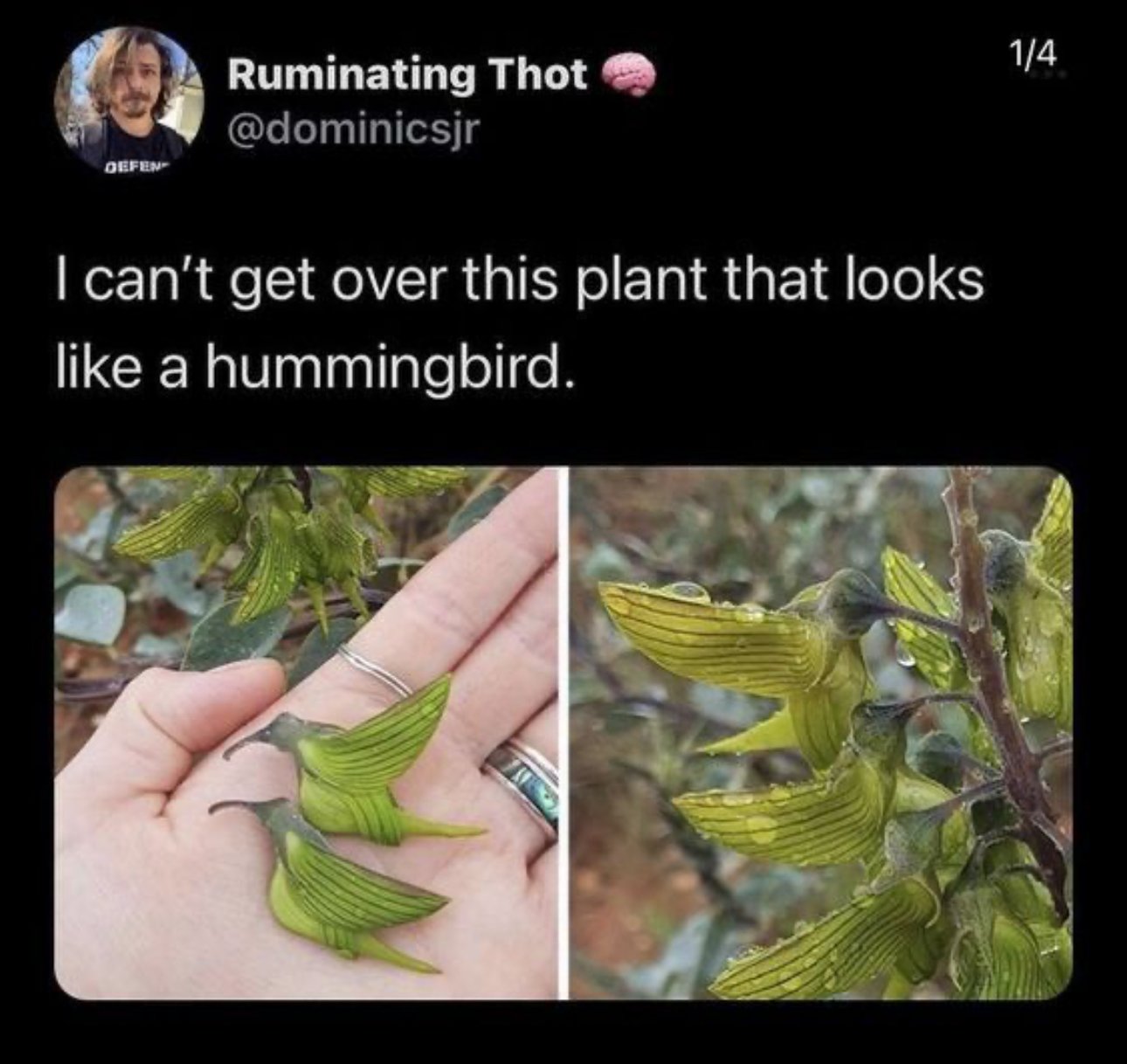this post was submitted on 07 Feb 2024
886 points (98.9% liked)
Mildly Interesting
18471 readers
52 users here now
This is for strictly mildly interesting material. If it's too interesting, it doesn't belong. If it's not interesting, it doesn't belong.
This is obviously an objective criteria, so the mods are always right. Or maybe mildly right? Ahh.. what do we know?
Just post some stuff and don't spam.
founded 2 years ago
MODERATORS
you are viewing a single comment's thread
view the rest of the comments
view the rest of the comments

There are examples of biological mimicry that result from natural selection pressures, leading to the evolution of such an organism.
Heres one thought experiment on why this plant’s evolution to mimic a hummingbird is not that unlikely (keeping in mind that mutations are random, and whatever ends up succeeding due to natural selection pressures doesn’t necessarily imply a deterministic process):
-hummingbirds select to drink from plants that other hummingbirds visit, leading to
-plant reproducing more because hummingbirds drinking from one flower to another helps with pollination, leading to
-plant evolving to look like other hummingbirds drinking from it so real hummingbirds drink from it
We can’t know for sure without doing research of course, but we have enough understanding of natural selection and evolutionary processes to reason about such mechanisms for existing organisms :)
Edit: doesn’t matter if plant native to Australia.You know continents were joined at one point, and evolution takes hundreds or millions of years at times. Also, I don’t mind being mistaken for chat gpt, I am shit posting anyway lol.
I completely disagree, we can know for sure. This plant is native to Australia. There are no native hummingbirds in Australia. The flowers evolved to look like this before there were hummingbirds around it.
Does it have to be hummingbirds? Surely there are other birds at that size
I am specifically mentioning hummingbirds, since that's the title, in the image, and the bulk of the discussion in this thread when I looked at it this morning. That being said, no, I don't think it has to be hummingbirds.
Keep in mind, these flowers are significantly smaller than most (if not all) hummingbirds, and hummingbirds themselves are amongst the smallest, if not the smallest, birds in the world. So, any species of bird that these flowers attract are going to be significantly larger than the flowers.
Not to mention that virtually all birds that feed from flowers have excellent visual acuity, that's almost a requirement for them to be successful with this feeding strategy. It seems highly unlikely that the birds would have a difficult time identifying that these are flowers and instead confusing them as a flock of miniature birds feeding from the plant. And, to me, that pretty much negates any argument for selective pressures on the flowers to have birdlike appearance for that purpose.
At least with the example of the "bee orchids" I mentioned in a prior comment, the selective pressures and the overall context make sense and appear to explain why the flowers have evolved to look like female bees and wasps. But the "hummingbird flower" from Australia that kind of resembles the profile of a hummingbird if viewed from a specific angle and out of context doesn't really hold up, in my opinion.
Chat GPT ass text
What's your excuse
Oh shit, obligatory chat GPT ass-text